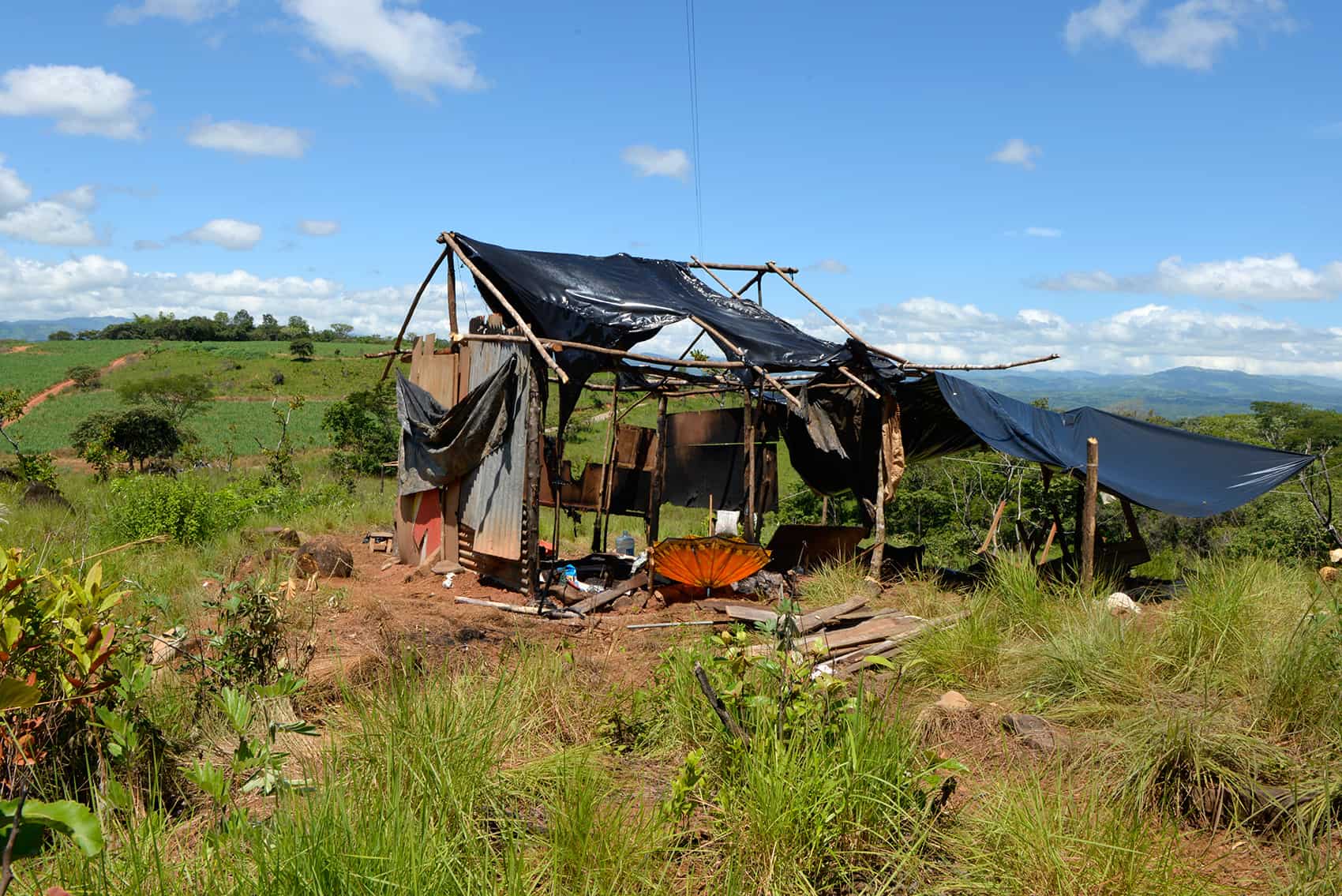BUENOS AIRES, Puntarenas – As government mediators return to San José and peace slowly returns to the Salitre indigenous reserve in Costa Rica’s southeastern region, the charred skeleton of a makeshift home remains as the only visible vestige of an intense conflict earlier this week.
The dispute reached its peak Saturday when at least 80 farmers blocked the entrance to the region’s indigenous reserve and burned down the home of an indigenous family. But the buildup to the conflict began more than a week ago when a group of Bribrí residents built shelters on a property at the edge of the reserve, displacing non-indigenous farmers who had been occupying the land.
Indigenous leaders call it a “re-occupation,” or a legal staking of lands within the reserve, but farmers said it was an “invasion.” Although police have since quelled the violence, the issue at the center of the controversy is far from resolved.
Indigenous rights to re-occupation
Costa Rica passed an Indigenous Law in 1977, which gave indigenous groups land rights within protected reserves throughout the country. When non-indigenous people continued to settle within the reserves, indigenous people fought back with “re-occupation” campaigns.
Though entirely legal, there is no official procedure for re-occupation. In any of the country’s reserves, a group of indigenous residents can simply show up to a territory occupied by non-indigenous people and remove whoever is residing there.
According to Presidency Vice Minister Ana Gabriel Zúñiga, members of the government consider the reserve as an example of the success of re-occupation campaigns. Salitre’s indigenous inhabitants now lawfully reside in more than 75 percent of the reserve’s 11,700 hectares.
“We aren’t taking anyone’s land,” said Lesner Figueroa, one of the Bribrí people now occupying the former farms. “Those farmers don’t live here, we live here. We are within the law.”
Non-indigenous rights of possession
While the law unquestionably supports indigenous re-occupation, non-indigenous farmers argue that their rights to possess property have been violated.
“There are non-indigenous people who have been on their land for more than 40 years,” said Leonard Vidal, one of the farmers. “People are losing land that has been in their family for generations.”
Many of the farmers were born and raised within the reserve, and inherited their properties from family or purchased it from other non-indigenous sellers. The law protects property rights of those who obtained land before 1977, or purchased it from someone who owned the land before that year.
The issue for farmers is proving the ownership history.
“Sure, the law was passed in 1977, but we are talking about purchases that were made in the 1920s and ’30s, when record keeping practically didn’t exist,” regional police chief Reynaldo González told The Tico Times. “On top of that you have issues of fraud. Plenty of people sold land that wasn’t theirs to sell.”
Complicating the issue further is Salitre’s large mestizo population – those who have both indigenous and non-indigenous blood. In some cases farmers who are considered white by indigenous people have inherited land from an indigenous parent or grandparent.
“You have people who have grown up in the reserve their entire lives who don’t have land rights,” said Alvaro Solís, a non-indigenous farmer with land inside the reserve. “No one knows for sure who has indigenous blood and who doesn’t. It’s become chaos.”
Mediation
After the conflict in Salitre turned violent, Zúñiga left San José on Monday to join a team of mediators from the Ministry of Peace who had been in Salitre since the beginning of the re-occupation.
She and her team returned to the capital at 10 p.m. on Tuesday night after obtaining signed peace agreements from both the indigenous and non-indigenous groups.
The vice minister promised to step up police presence in the area to provide protection to Bribrí families who will continue to occupy the contested territory, and to send a team from the National Registry to verify that re-occupied land is within borders of the reserve. Zúñiga also agreed to launch an investigation to determine if the land taken from farmers was purchased before the 1977 law. That investigation will take at least three months.
Meanwhile, police and government officials say the situation in Salitre is stable. But Zúñiga noted that the complicated issues will not be resolved until a more comprehensive system is put into place.
“My main concern was to restore peace,” Zúñiga said. “We have done that. But this is a long-standing problem that needs a permanent solution.”





